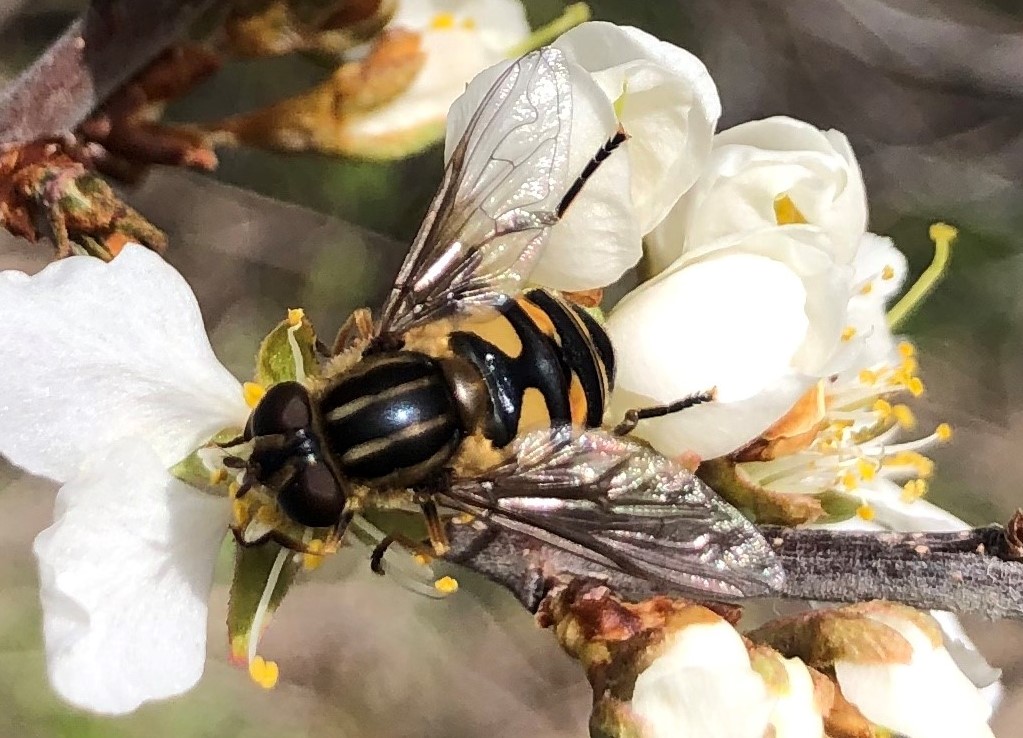Beneficial Larvae
- 2024-05-02
- By mkirk
- Posted in Horticulture, The Garden Buzz
By Brenda Francis, Colorado Master Gardener

Imagine the protein and calories it takes to undergo complete metamorphosis. Complete metamorphosis, more specifically pupation, is an incredible process in which a larva takes on a semi-liquid state to create a new skeleton, organs, and soft tissue. Larvae possess huge appetites to make this happen.
Most larvae are looking for good sources of protein. They do eat vegetation, but to have the energy to pupate, they feed on aphids, scale, eggs, mites, mealworms and other small insects as their main diet.
Complete metamorphosis has four stages. An insect starts as an egg. It hatches into a crawling insect called a larva. The larva grows and becomes stronger and bigger. The larva retreats into a self-made container, and a few weeks later, it emerges as a completely different life form. This final adult form is usually the one we associate with its name.
Good gardens depend on beneficial insects to reduce invasive populations. Get to know the larvae version of these beneficial bugs, so you don’t inadvertently destroy these species as they are growing into adults. We recognize the adult versions of lady beetles, green lacewings, praying mantids and flower flies in their adult forms. You will be surprised at how many of these insects you can recognize in your garden in their larval form once you do a quick image search.
We know there are dozens of versions of adult lady beetles, all with the curvy scarab-look. The lady beetle larvae have a geometric design, often including their adult colors. They are larger than their adult form.


The green lacewing larva has a larger, angular look as well. The larvae show some lacy details like their adult versions as they grow.

The colorful syrphid flies, also known as flower flies or hover flies, look like hairless bees. Their diet is mostly pollen and nectar as an adult. However, as a long maggot-like larva, it consumes thousands of aphids and mealworms.
Not all larvae are beneficial. The Colorado potato beetle (CPB) has a similar shape and function as the lady beetle. But these larvae and adult insects can do damage to the nightshade plants in your vegetable garden.
Next time you meet a worm, caterpillar or low-riding multi-legged insect, take a minute to understand its diet. Larvae appetites are often the reason many insects earn their ‘beneficial’ status.
Not all insects that crawl are larvae. The true larva is a life form in the journey to becoming an adult insect. Recognizing the good bugs in all their forms helps beneficial insects flourish.
Horticulture Resources
- Garden Buzz Archives
- CSU Extension Resources
- Colorado Master Gardener Program
- Foothills to Plains Native Plant Master Program
- Native Bee Watch Community Science Program
- The Co-Hort Blog
- PlantTalk Colorado
- Soil Testing
- Plant Select
- Emerald Ash Borer
- Japanese Beetle
- Colorado State Forest Service
- Ask an Expert


